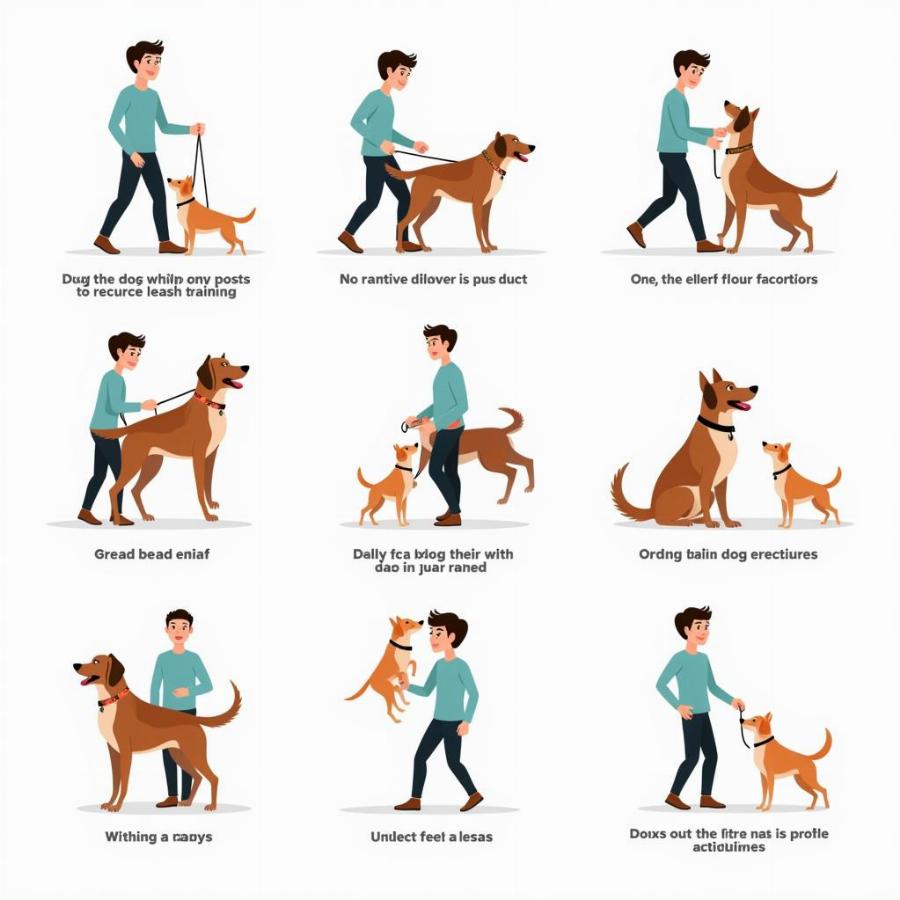While the term “deadly dog breeds” often evokes fear and sensationalism, it’s crucial to understand that any dog, regardless of breed, can bite under certain circumstances. However, some breeds possess physical characteristics and temperaments that, if not properly managed, can result in more serious injuries. This article aims to provide a balanced perspective on the topic, focusing on responsible ownership, understanding dog behavior, and dispelling common misconceptions.
Are Some Dog Breeds Inherently Dangerous?
The question of inherent danger in certain breeds is complex. While genetics play a role in a dog’s temperament and physical capabilities, upbringing, training, and socialization are equally, if not more, important factors in determining a dog’s behavior. A well-socialized and trained dog of any breed is less likely to exhibit aggressive behaviors. Conversely, a poorly trained dog of any breed, even smaller ones, can pose a risk.
Factors Contributing to Dog Bites
Focusing solely on breed overlooks other crucial factors contributing to dog bites. These include:
- Lack of Socialization: Dogs not exposed to various people, animals, and environments during their critical developmental period may react fearfully or aggressively to unfamiliar situations.
- Poor Training: Dogs lacking basic obedience training are more difficult to control and may be more prone to biting.
- Abuse and Neglect: Dogs subjected to harsh treatment are more likely to develop aggressive behaviors.
- Provocation: Teasing, cornering, or startling a dog can trigger a defensive bite.
- Owner Irresponsibility: Lack of proper supervision, inadequate containment, and failure to address behavioral issues can significantly increase the risk of dog bites.
Focusing on Responsible Ownership
Instead of focusing on banning specific breeds, the emphasis should be on promoting responsible dog ownership across all breeds. This includes:
- Early Socialization: Expose puppies to a wide range of stimuli from a young age.
- Consistent Training: Implement positive reinforcement training methods to build a strong bond and establish clear communication.
- Proper Containment: Ensure secure fencing and use leashes in public areas to prevent escapes and unwanted interactions.
- Understanding Dog Body Language: Learn to recognize signs of stress or anxiety in dogs to avoid triggering aggressive responses.
- Seeking Professional Help: Consult with a certified dog trainer or behaviorist if you encounter behavioral issues.
Dispelling Myths about “Deadly Dog Breeds”
side effects of lepto vaccine in dogs Media portrayals often perpetuate negative stereotypes about certain breeds, leading to unfair prejudice and fear. It is important to remember that:
- Individual Variation: Within any breed, there is a wide range of temperaments and personalities.
- Statistics Can Be Misleading: Bite statistics often fail to account for factors like owner responsibility and dog population density.
- Focusing on Behavior, Not Breed: Addressing the root causes of aggression, rather than targeting specific breeds, is crucial for preventing dog bites.
 Dog Training Guide
Dog Training Guide
What are the legal implications of owning a “deadly dog breed”?
Laws regarding specific breeds vary widely depending on location. Some areas have breed-specific legislation (BSL) that restricts or bans certain breeds, while others focus on dangerous dog ordinances that address individual dogs based on their behavior, regardless of breed. Researching and understanding your local laws is crucial. dog vaccine leptospirosis side effects It’s also essential to consider homeowner’s or renter’s insurance policies, as some may have restrictions or exclusions related to certain breeds.
How can I choose a dog breed that’s right for me and my family?
Choosing the right dog breed is a significant decision. leptospirosis vaccine side effects in small dogs Consider your lifestyle, living environment, and experience with dogs. Research different breeds thoroughly and talk to reputable breeders or rescue organizations. If you have children, it’s especially important to choose a breed known for its gentle and patient temperament.
Conclusion
The term “deadly dog breeds” is a misleading oversimplification. While some breeds may have the potential to inflict more serious injuries, responsible ownership, training, and socialization are the most critical factors in preventing dog bites. By focusing on education, responsible practices, and dispelling harmful stereotypes, we can create safer communities for both people and dogs.
FAQ
- Are Pit Bulls inherently aggressive? No. Like any breed, a Pit Bull’s behavior is shaped by its environment and upbringing.
- What should I do if a dog approaches me aggressively? Avoid direct eye contact, stand still, and avoid sudden movements. Slowly back away and do not run.
- How can I socialize my puppy? Expose your puppy to various people, animals, and environments in a positive and controlled manner.
- Are there any breeds that are completely safe? No breed is entirely without risk. Any dog can bite under certain circumstances.
- What is breed-specific legislation? BSL refers to laws that target specific breeds, often restricting or banning their ownership.
Related Questions and Articles
Interested in learning more about responsible dog ownership? Check out our article on 10 most deadly dogs and when is dog days 2024.
Beaut Dogs: Your Trusted Source for Dog Information
Beaut Dogs is your one-stop resource for everything dog-related, offering expert advice, breed information, and helpful tips on caring for your canine companion. For personalized guidance and answers to your specific questions, please contact us via Email at [email protected]. We are here to support you on your journey as a responsible dog owner!